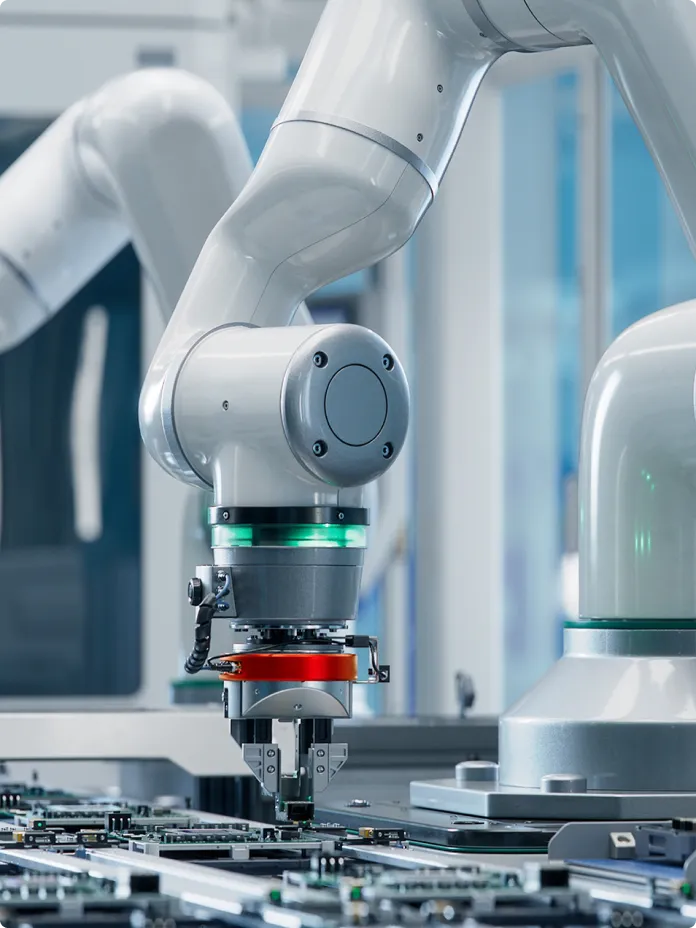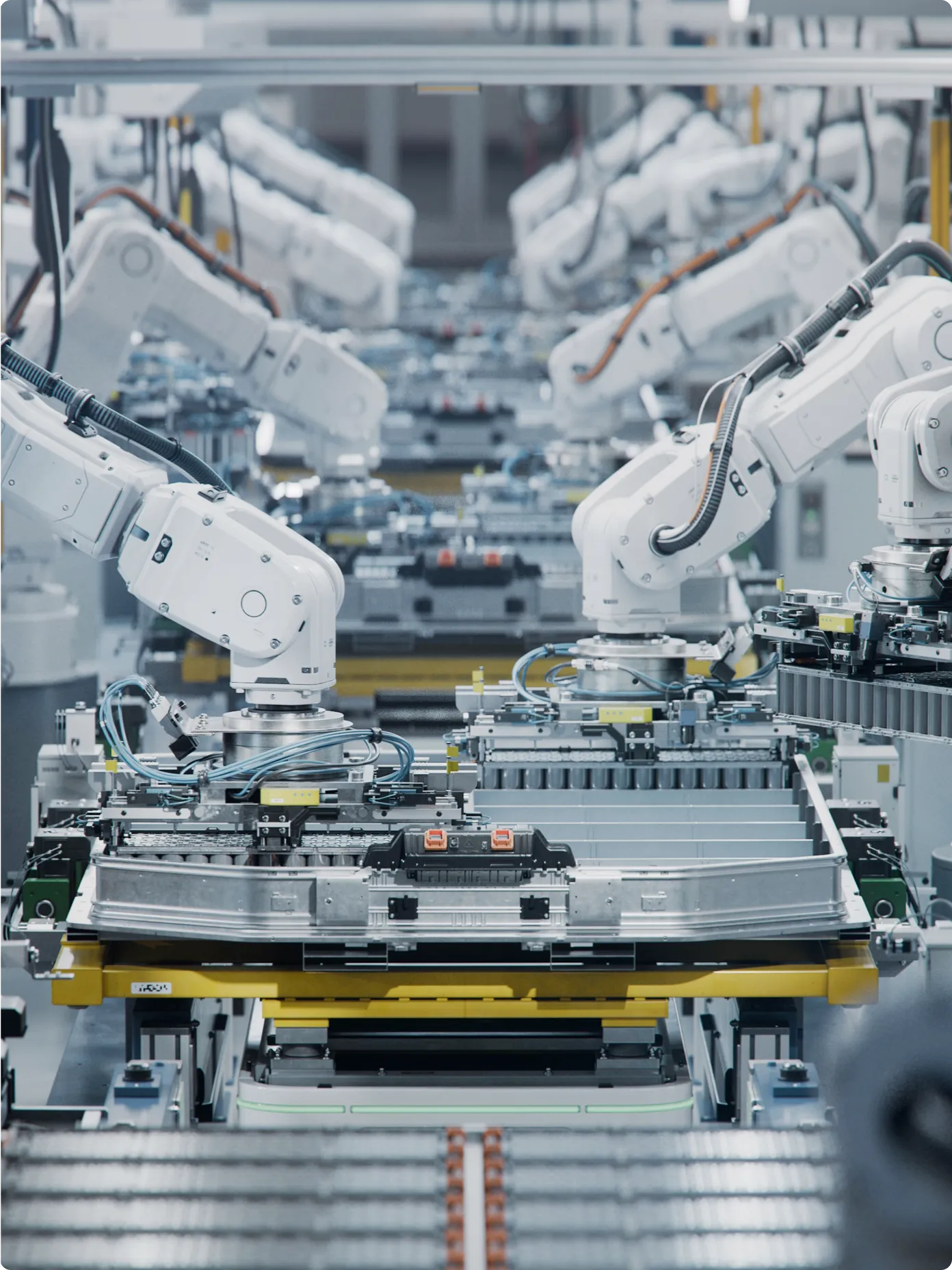EXEIN FOR robotics
Smart robotics secured from within.
Exein secures robotics operations by integrating at a firmware level, mitigating risks like data breaches, physical damage, and safety hazards.



Securing the future of connected robotics
Exein embeds intelligent security directly into firmware, delivering real-time threat detection, anomaly response, and compliance-ready protection at the hardware level.
Known vulnerabilities across various industrial robot models and software have been identified by Trend Micro
Over half of industrial employees believe that the robotic systems in their organization are at significant risk of being hacked
Smart security for smart robotics

Security at all levels

Zero downtime

Smart growth, secured
case studies
FAQ
From integration to incident response, explore common questions and how Exein helps secure what matters.
What is robotics cybersecurity?
Robotics cybersecurity is the practice of protecting intelligent machines—like industrial robots, drones, and autonomous vehicles—from digital threats. Key aspects involve:
- Securing communication channels to prevent hacking or tampering.
- Authenticating users and commands to verify trust.
- Keeping software and firmware updated to patch vulnerabilities.
- Monitoring systems in real time to detect intrusions or anomalies.
This ensures robots are reliable, safe, and protected throughout their lifecycle.
Why is security essential for robotic systems?
Ensuring security in robotics is crucial for several reasons:
- Safety first: A hacked robot can physically harm people or damage property.
- Operational integrity: Cyberattacks can shut down or disrupt manufacturing lines.
- Data protection: Robots often handle sensitive or confidential information.
- Regulatory compliance: Many industries require robotics to meet cybersecurity standards.
- Business reputation: A security breach can lead to liability, downtime, and loss of client trust.
What key regulations and standards apply to robotics cybersecurity?
Several major frameworks guide cybersecurity in robotics:
- ISO/IEC 27001: Information security management systems.
- IEC 62443 series: Cybersecurity for industrial automation and control.
- EU AI Act (upcoming): Security requirements for high-risk AI, including robotics.
- NIST SP 800 series: U.S. guidance on IoT and embedded device security.
- Industry-specific mandates: For example, FDA requirements for medical robotics.
These standards help robotics companies build secure and compliant devices.
What best practices can robotics companies adopt to protect their products?
Robotics firms can enhance security with a multi-layered strategy:
- Secure design: Embed security measures during product development (often referred to as “security by design”).
- Strong authentication: Implement multi-factor authentication and keys/certificates.
- Regular software updates: Patch both operating systems and firmware continually.
- Network segmentation: Isolate robots from other systems using secure zones.
- Real-time monitoring and incident response: Detect breaches promptly and respond effectively.
- Code reviews and testing: Use penetration testing and vulnerability assessments.
- Employee training: Make staff aware of cybersecurity protocols and best practices.
